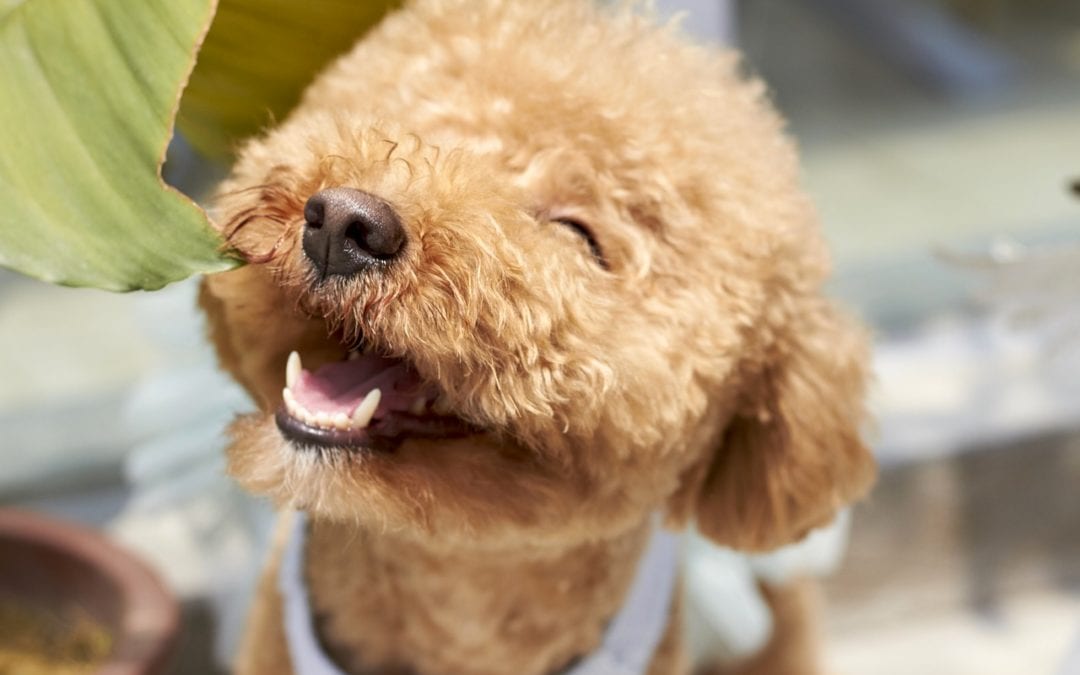Your veterinarian will have inspected your pet’s teeth at the time of examination. They may have found plaque, tartar, gingivitis or even periodontitis. A professional dental cleaning is the only way to properly treat tartar build-up, gingivitis and periodontitis. Dental disease initially starts with plaque accumulation after a meal. This plaque can harden and become tartar. The gums become inflamed and red (ginigivitis) as a reaction to the plaque and tartar. If untreated, plaque, tartar and gingivitis can progress to a more serious disease called periodontitis. Periodontitis is a mouth infection. This is not simply a matter of having “ugly” teeth or bad breath. Periodontal disease is debilitating and painful. The bacteria from infected teeth and gums can spread into the bloodstream and travel to vital organs. One of the most important things you can do for your dog or cat if you want them to live as long as possible, is to make sure they have excellent oral health — this means a professional dental cleaning if its needed.
What happens when my pet is admitted for a dental cleaning?
General anesthesia is required for the professional dental cleaning. Pre-anesthetic blood work is performed to help ensure that your pet will be safe under anesthesia. We use only the safest forms of anesthesia and pain control. In fact the gas anesthesia and many of the drugs are exactly the same as would be used for an elderly human. In most cases even geriatric patients and patients with chronic diseases can be safely anesthetized to treat their dental disease. Once anesthetized, your pet’s teeth are ultrasonically scaled and polished. The veterinarian can then fully examine the teeth. All problems are recorded and appropriate therapy can be decided upon. Dental radiographs are required to see what pathology lies below the gums and inside the teeth. Mild periodontal problems can be treated with intra-oral therapy at the time of the procedure. Severe periodontal problems may require dental extractions. All teeth are treated with fluoride before your pet is recovered from anesthesia. Once fully awake, your pet can go home the same day.
Why would my pet need dental extractions?
Teeth can require extraction for a variety of reasons. Usually periodontal disease is the culprit. Periodonitis can become so severe that much of the bone holding the tooth in place rots away. When periodontitis reaches this stage, there is little that can be done to save the affected tooth. With extraction and cleaning out of the infected tissues under anesthesia, the infection can be cleared and the pain of periodontitis goes away. Fractured, damaged and crowded teeth along with poorly occluding teeth may require extraction. Cats often get a peculiar problem called feline odontoclastic resorptive lesions (FORLs), for which there is little therapy other than extraction. These are very painful and lead to the tooth breaking and can lead to infection at the root level if not extracted.
How can I prevent dental disease?
Daily tooth brushing is the best preventative for dental disease. Special dog and cat toothpastes and toothbrushes are designed to make the job easier. Never use human toothpaste as the fluoride in it will cause an upset stomach. It is easiest to start this routine when pets are young, but even an adult or older pet can be taught to behave for tooth brushing. Oral hygiene sprays and gels are available for pets that will not tolerate tooth brushing. New dental foods, such as Hill’s t/d, or Royal Canin Dental greatly help reduce tartar formation, even with only a few kibbles a day as a treat. Once your pet has had a dental cleaning, you can reduce the number of future dental cleanings needed by brushing your pet’s teeth daily. Some evidence suggests that daily dental hygiene can increase your pet’s lifespan as it helps prevent chronic dental disease and mouth infection.
Dental disease in the form of tartar buildup, gingivitis, periodontitis, and feline odontoclastic resorptive lesions is extremely common in veterinary medicine. Some pets will need yearly professional veterinary dental care under anesthesia. A complete oral examination is a very important part of your pet’s preventive care. Our goal is to provide the most current veterinary dental care available with the hope of helping your pet to live as long and happily as possible.

